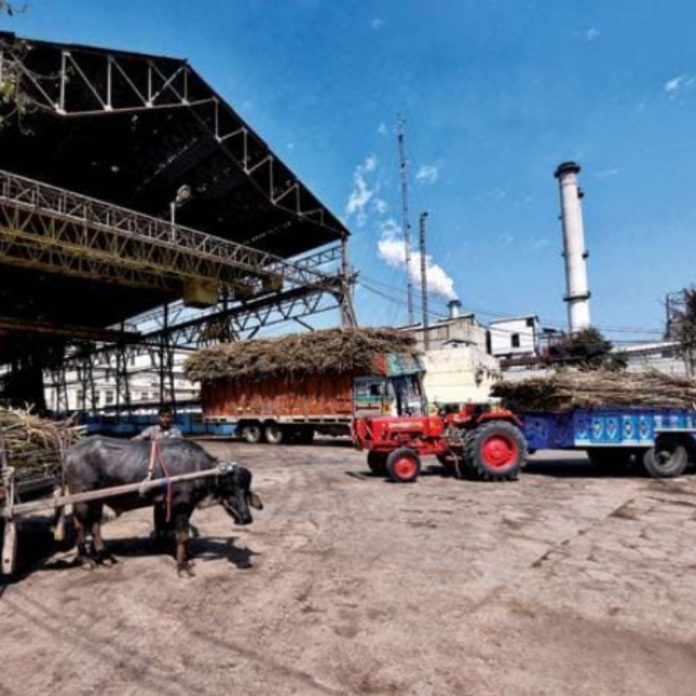India, a significant player in global sugar production, grapples with a complex issue: reconciling the economic vitality of the sugar industry with its considerable environmental footprint. This article delves into the environmental challenges posed by the industry, from water scarcity and air pollution to greenhouse gas emissions, and suggests potential strategies for a more sustainable Indian sugar industry.
1. The Sugar Industry in India: An Overview
Historical Context
Sugarcane cultivation in India has a long history, tracing back to its domestication in ancient times. The industry experienced substantial growth during the British Raj and post-independence, spurred by government support and increasing domestic demand. Today, the sugar industry is an integral part of the Indian economy.
Economic Importance
The industry supports the livelihoods of millions of farmers and workers, significantly contributing to the agricultural GDP and playing a pivotal role in rural development. As one of the world’s largest sugar consumers, the industry’s significance cannot be overstated.
2. Environmental Challenges
Water Usage and Pollution
High Water Consumption: Sugarcane is a water-intensive crop, requiring approximately 1,500-2,500 liters of water to produce a single kilogram of sugar. This high water usage puts a strain on water resources, particularly in regions facing water scarcity.
Water Pollution: The processing of sugarcane produces wastewater laden with organic matter, chemicals, and sediments. The release of these untreated effluents into water bodies depletes oxygen levels, adversely affecting aquatic life and contaminating sources of drinking water.
Air Pollution
Emissions from Mills and Distilleries: Sugar mills and distilleries release significant air pollutants, including particulate matter, sulfur dioxide (SO2), and nitrogen oxides (NOx). The burning of bagasse (a by-product) for energy also releases ash and smoke, further degrading air quality.
Open Field Burning: The prevalent practice of open burning sugarcane fields prior to harvest releases harmful pollutants, impacting air quality and public health.
Soil Degradation
Monoculture Practices: Continuous sugarcane cultivation depletes soil nutrients, leading to a decline in fertility over time.
Chemical Use: The extensive use of chemical fertilizers and pesticides contaminates and degrades the soil. These chemicals can leach into the soil, affecting its structure and health.
Deforestation and Greenhouse Gas Emissions
Land Clearing: The increasing demand for sugar often results in deforestation, especially in ecologically sensitive areas. This not only diminishes biodiversity but also contributes to soil erosion and disrupts ecosystems.
GHG Emissions: The cultivation of sugarcane, sugar processing, and product transportation contribute to the industry’s substantial carbon footprint. Methane emissions from wastewater treatment and the burning of fossil fuels and bagasse further increase greenhouse gas emissions.
3. Regulatory Framework and Policies
Current Regulations
The Indian government has enacted regulations such as the Water (Prevention and Control of Pollution) Act, 1974, the Air (Prevention and Control of Pollution) Act, 1981, and the Environment Protection Act, 1986, to mitigate the environmental impact. These regulations establish standards for effluent discharge, air emissions, and waste management.
Gaps and Challenges
Enforcement remains a significant challenge. Many sugar mills, particularly smaller ones, struggle to comply due to financial constraints and a lack of technical expertise. Additionally, enforcement and monitoring are fragmented due to a lack of coordination among regulatory agencies.
4. Innovative Solutions and Best Practices
Water Management
Efficient Irrigation: Techniques such as drip irrigation deliver water directly to plant roots, minimizing water wastage and optimizing water use.
Effluent Treatment Plants (ETPs): The installation of ETPs can treat wastewater before discharge, removing contaminants and making it suitable for reuse or safe disposal.
Renewable Energy Integration
Bagasse-Based Cogeneration: Bagasse, a fibrous residue, can be used as a renewable energy source. Cogeneration plants can produce electricity and steam, reducing reliance on fossil fuels and lowering carbon emissions.
Solar and Wind Energy: The integration of solar and wind power into sugar mill operations can further reduce the industry’s carbon footprint by providing clean, reliable power.
Sustainable Agriculture Practices
Crop Rotation: Alternating sugarcane with legumes or other crops improves soil health, reduces pest infestations, and minimizes the need for chemical fertilizers.
Organic Farming: The promotion of organic farming practices reduces dependence on chemical pesticides and fertilizers, enhancing soil health, biodiversity, and lowering the environmental impact.
Waste Management
Bio-composting: Press mud, a by-product of sugar production, can be converted into valuable bio-compost through aerobic decomposition. This reduces waste and provides a nutrient-rich soil conditioner for agriculture.
Ethanol Production: Molasses, another by-product, can be used to produce ethanol, a renewable biofuel. This not only reduces waste but also provides an alternative energy source, supporting India’s biofuel policies.
5. Case Studies and Success Stories
Successful Implementations in India
Tamil Nadu’s Pioneering Mills: Several sugar mills in Tamil Nadu have adopted innovative water management and waste treatment practices. Advanced ETPs and drip irrigation systems have significantly reduced their environmental footprint.
Maharashtra’s Bio-composting Initiatives: Sugar mills in Maharashtra have successfully implemented bio-composting projects, diverting waste and providing high-quality compost to local farmers, promoting sustainable agriculture.
Global Examples for Inspiration
Brazil’s Bagasse Power: Brazil, a global leader in sugar production, has successfully implemented bagasse-based cogeneration in many mills, significantly reducing reliance on fossil fuels and lowering emissions.
Australia’s Water-Saving Techniques: Australian sugarcane farmers have adopted water-efficient irrigation techniques like subsurface drip irrigation, minimizing water consumption and its impact on local water resources.
Quantifying the Impact: In Tamil Nadu, mills using advanced ETPs have reportedly reduced water pollution. Maharashtra’s bio-composting projects have diverted waste from landfills.
6. The Way Forward
Policy Recommendations
Strengthening Regulations: The government can strengthen existing environmental regulations and ensure stricter enforcement through penalties for non-compliance and support for sustainable practices.
Incentives for Sustainability: Financial incentives such as subsidies and tax breaks can encourage sugar mills to invest in sustainable technologies. Supporting research and development in this area can further drive innovation.
Role of Stakeholders
Industry Collaboration: Collaboration between sugar mills, farmers, and government agencies is crucial for promoting sustainability. Industry associations can play a key role in disseminating best practices and facilitating knowledge sharing.
Community Engagement: Engaging local communities in monitoring environmental impacts and supporting the adoption of sustainable practices can enhance the effectiveness of initiatives.
Future Prospects
Technological Innovations: Advancements in precision agriculture, artificial intelligence, and biotechnology hold promise for addressing environmental challenges. Investing in these technologies can drive sustainable growth.
Global Partnerships: Building global partnerships with countries that have successfully implemented sustainable sugar production practices can provide valuable insights and accelerate progress in India.
7. Conclusion
The Indian sugar industry can transition towards a sustainable future by addressing water usage, air pollution, soil degradation, and greenhouse gas emissions. With a combination of innovative solutions, effective policies, collaboration among stakeholders, and a commitment to technological advancements, the industry can achieve a balance between economic growth and environmental responsibility. By adopting sustainable practices, the Indian sugar industry can not only secure its future but also contribute to a greener tomorrow.
Disclaimer: The views and opinions expressed in the article by Dilip Patil, Managing Director of Samarth SSK Ltd., are solely his own.












